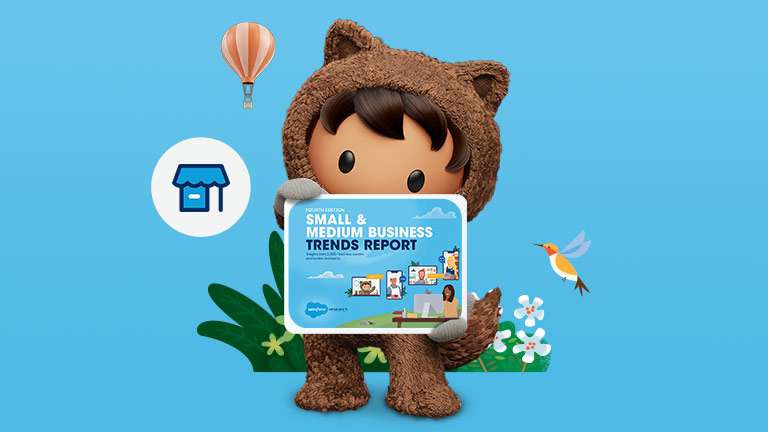Small business productivity is essential for SME success. In fact, you could argue that productivity is more important for small businesses than it is for their larger counterparts. After all, small businesses have to do more with less. And they have to do it in an increasingly competitive climate, where slowing down might mean getting left behind.
But how can SMEs increase productivity to keep up with the current landscape? And in a time of decentralised workforces and tight budgets, how can they do it cost-effectively?
Let’s look at some small productivity hacks that SMEs can use to optimise talent, minimise waste and maximise resources.
Small business productivity hacks to turbocharge your SME
Track your time
This may sound obvious, but it’s essential that you carefully track your time to see if it’s spent being productive. You may think you have a firm grasp of how much time is dedicated to business-critical tasks, but you might be surprised by what the data shows when broken down. You track how your business’s financial resources are spent, so why wouldn’t you track how its time is spent? After all, time is a valuable resource as well.
Turn to innovation
Innovation can help small businesses connect departments, gather actionable insights and fix productivity gaps. A McKinsey report shows that nearly 85% of business leaders think that innovation is critical for growth, but only 6% are happy with their organisation’s performance in that area. By bringing in digital tools like CRM platforms, SMEs can empower their sales reps to follow their most valuable leads. They can also provide their service reps with the tools to interact with customers more efficiently. Better still, innovation can help SMEs become more agile and resilient; critical concerns in an unpredictable climate.
Batch your emails
If you’ve already tracked how much time you’re dedicating to various tasks, you should have a good idea of how much time is spent writing emails. Chances are, it’s too much. Productivity expert Tim Ferris has laid out the business case for using auto-response and only checking email twice a day. The idea is to focus on increasing output, not input. By answering all emails in quick bursts twice a day, SME leaders won’t fall into the time-drain of constant email drips. Having larger chunks of distraction-free time throughout the day will enable leaders to focus on the tasks at hand rather than their inbox.
Pay attention to the 20%
The Pareto Principle states that 80% of results come from 20% of actions. In other words, a small percentage of actions are likely driving a high percentage of value for your SME. For instance, 20% of the workforce may be driving 80% of the profits. Or 20% of your customers may account for 80% of your revenue. On a personal level, 80% of your time at work may only be resulting in 20% of your output. Look at what actions are driving results; then see if they can offer teachable moments.
Work smarter with artificial intelligence
Analytics are helping take SMEs to exciting new places, as leaders are increasingly able to make data-backed decisions rather than running on hunches. But data can do more than just enable better decision-making; it can help free the workforce to focus on tasks that utilise their skills. By leveraging AI-powered tools to automate mundane tasks, SMEs can empower their reps to focus on their customers and more creative tasks. This not only drives productivity; it drives employee satisfaction.
Track the right KPIs
If you’re bringing in new technologies, you might immediately see a quantum leap in productivity. Or, if you’re adjusting processes and strategies, you may see small, accumulative gains over time. In either case, maximising productivity will likely involve some tweaking and repeating to make sure that your SME is reaching its peak potential. To figure out what optimal productivity looks like, it’s important to have the right benchmarks in place. Identify the key performance indicators that best reflect your business goals, then set about tracking the effect your new processes and tools have on these KPIs. Then simply analyse; adjust; repeat.
Call on the team
No one will be able to identify bottlenecks and roadblocks to productivity as well as your workforce. After all, they’re the ones that are using your SME’s technologies and processes every day. Having too many meetings can be a productivity killer. However, consider bringing different departments together to provide feedback about productivity challenges they may be facing. If you’re hesitant to pull the teams away from their work, perhaps incorporate this feedback session as part of a SWOT analysis. Or, if you’re worried about workers being afraid to offer constructive criticism, you can send out anonymous surveys.
Skill up the workforce
Many workers had to take on new roles and responsibilities due to the pandemic, and many of them had to do it on the fly. Not surprisingly, this led to some growing pains. But it also led to a focus on creating a more empowered, better-skilled workforce. Today’s worker is no longer willing to be boxed in by their function; they want to be able to help out where needed. The good news is that a multi-skilled workforce helps drive productivity. The better news is that training and upskilling programmes are some of the best ways to create employee loyalty. And best of all is that it’s never been easier to use on-demand training platforms, which can help workers skill up from wherever they please. Future-proofing the workforce is now easy, fast and affordable.
Create a workplace that inspires
The most productive worker is one that loves their job and is genuinely invested in their work. Unfortunately, a Gallup workplace poll revealed that over half of US employees are not engaged with their work. These employees are not only less productive than employees that are invested in their work, they’re also more likely to look for new opportunities.
The cost of lower productivity and increased employee churn can be devastating for SMEs. To avoid this, strive to create a workplace where employees feel valued and empowered. Strive to showcase business values that everyone can get behind. Focus on empathy. Communicate with sympathy. Increase transparency. Nurture collaboration. In other words, create a workplace that inspires people to be at their best.
A blueprint for small business productivity is a blueprint for a better tomorrow
Hopefully these small business productivity hacks can help your SME start driving productivity and reach its full potential. But it may be a marathon, not a sprint. By following this blueprint, small businesses will create a happier workplace. They’ll have a workforce with new skills. They’ll have new strategies and technologies for controlling their future. And they’ll have a workforce that will want to follow them, wherever they might be headed.
For a deeper dive into how you can drive small business productivity, download your free copy of our eBook, 5 Productivity Tips Every Small Business Needs to Know.







